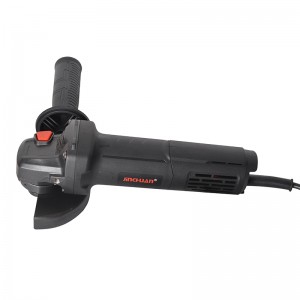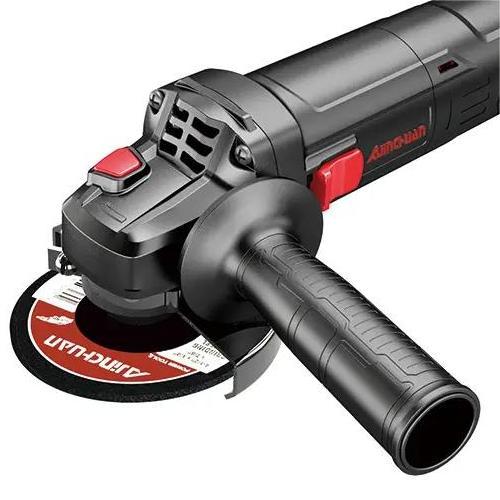In modern manufacturing, precision processing technology is crucial for enhancing product quality and production efficiency. Large-angle grinding, as a special grinding process, has gradually become one of the important technologies in the field of precision processing because it can achieve high-precision and high-efficiency surface processing. This article will introduce in detail the principle, application scenarios and advantages of large-angle grinding in precision machining.
First, the principle of large-angle grinding
Large-angle grinding refers to a grinding process in which the Angle (grinding Angle) between the normal of the contact surface between the grinding wheel and the workpiece and the direction of the grinding wheel’s velocity is greater than 45 degrees. This grinding method can significantly increase the material removal rate, while reducing grinding force and grinding heat, thereby achieving high-precision and high-efficiency surface processing.
1. The influence of grinding angles
Grinding Angle is one of the core parameters of large-angle grinding. A larger grinding Angle can increase the contact area between the grinding wheel and the workpiece, thereby improving the material removal rate. Meanwhile, a larger grinding Angle can also reduce the generation of grinding force and grinding heat, and lower the thermal damage and deformation on the workpiece surface.
2. Selection of grinding wheels
Large-angle grinding has relatively high requirements for the performance of grinding wheels. Grinding wheels with high hardness, high wear resistance and good heat dissipation performance are usually selected. For instance, diamond grinding wheels and cubic boron nitride (CBN) grinding wheels are often used in large-angle grinding due to their excellent performance. These grinding wheels can maintain stable grinding performance under high loads, reducing the frequency of grinding wheel wear and replacement.
Second, the application scenarios of large-angle grinding
1. Aerospace field
In the aerospace field, many key components require high-precision surface processing to ensure their reliability and durability under extreme conditions. Large-angle grinding can achieve high-precision surface processing while reducing processing time and costs. For instance, in the processing of components such as engine blades and turbine discs, large-angle grinding can significantly enhance processing efficiency and surface quality.
2. Automobile manufacturing
In automotive manufacturing, many components such as crankshafts and camshafts require high-precision grinding processing. Large-angle grinding can enhance the processing efficiency and surface quality of these components, and reduce processing time and costs. Meanwhile, large-angle grinding can also reduce grinding force and grinding heat, lower the thermal damage and deformation on the workpiece surface, and increase the service life of components.
3. Machinery manufacturing
In the field of mechanical manufacturing, large-angle grinding is widely used in the processing of various precision components. For instance, in the processing of gears, shaft parts, etc., large-angle grinding can achieve high-precision surface processing, enhancing the meshing accuracy and transmission efficiency of components. In addition, large-angle grinding can also reduce vibration and noise during the processing and improve the comfort of the processing environment.
Third, the advantage of large-angle grinding
1. High-precision processing
Large-angle grinding can achieve high-precision surface processing, improving the surface quality and dimensional accuracy of the workpiece. By optimizing the grinding Angle and grinding wheel parameters, the surface roughness can be significantly reduced and the surface finish of the workpiece can be improved.
2. High-efficiency processing
Large-angle grinding can significantly improve the material removal rate and reduce processing time and costs. A larger grinding Angle increases the contact area between the grinding wheel and the workpiece, thereby enhancing the material removal rate. Meanwhile, large-angle grinding can also reduce the generation of grinding force and grinding heat, lower the frequency of grinding wheel wear and replacement, and further enhance processing efficiency.
3. Low grinding force and grinding heat
Large-angle grinding can reduce the generation of grinding force and grinding heat, and lower the thermal damage and deformation on the workpiece surface. A larger grinding Angle can disperse the grinding force and reduce the stress concentration on the workpiece surface. Meanwhile, large-angle grinding can also reduce the generation of grinding heat, lower the thermal damage and deformation on the workpiece surface, and improve the machining accuracy and service life of the workpiece.
4. Adaptable to various materials
Large-angle grinding can adapt to the processing of various materials, including those with high hardness and high brittleness. By choosing the appropriate grinding wheel and grinding parameters, efficient processing of different materials can be achieved. For instance, diamond grinding wheels and cubic boron nitride (CBN) grinding wheels can effectively process high-hardness and high-brittleness materials, such as ceramics and cemented carbides.
Fourth, Challenges and Solutions of Large-angle grinding
1. Grinding wheel wear
In the process of large-angle grinding, grinding wheel wear is a common problem. Grinding wheel wear not only affects processing accuracy but also increases processing costs. To solve this problem, grinding wheel materials with high hardness and high wear resistance, such as diamond and cubic boron nitride (CBN), can be adopted. Meanwhile, optimizing grinding parameters such as grinding speed and feed rate can reduce the wear of grinding wheels and extend their service life.
2. Grinding vibration
In the process of large-angle grinding, grinding vibration is a problem that needs attention. Grinding vibration not only affects the quality of the machined surface, but also increases the wear of the grinding wheel and the thermal damage to the workpiece surface. To solve this problem, dynamic balancing technology can be adopted to dynamically balance the grinding wheel and reduce grinding vibration. Meanwhile, optimizing grinding parameters such as grinding speed and feed rate can further reduce grinding vibration and improve the quality of the machined surface.
3. Grinding thermal control
In the process of large-angle grinding, the control of grinding heat is a key issue. Grinding heat not only affects the surface quality of the workpiece, but also leads to thermal damage and deformation of the workpiece surface. To solve this problem, the cooling liquid cooling technology can be adopted to cool the grinding area and reduce the generation of grinding heat. Meanwhile, optimizing grinding parameters such as grinding speed and feed rate can further reduce grinding heat and improve the quality of the machined surface.
Fifth, Summary
Large-angle grinding, as an efficient precision processing technology, has gradually become one of the important technologies in modern manufacturing because it can achieve high-precision and high-efficiency surface processing. By optimizing the grinding Angle, selecting appropriate grinding wheel materials and grinding parameters, large-angle grinding can significantly enhance processing efficiency and surface quality, reduce the generation of grinding force and grinding heat, and lower the thermal damage and deformation of the workpiece surface. Although large-angle grinding faces some challenges, such as grinding wheel wear, grinding vibration and grinding thermal control, these problems can be effectively solved by adopting advanced technologies and optimization measures.
It is hoped that the introduction in this article can help you better understand the principle, application scenarios and advantages of large-angle grinding, and provide reference and assistance for your precision processing project.
Post time: May-19-2025


